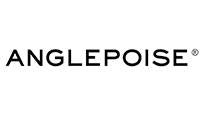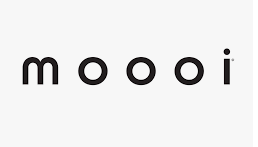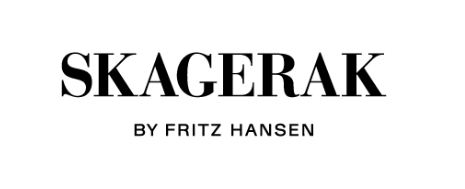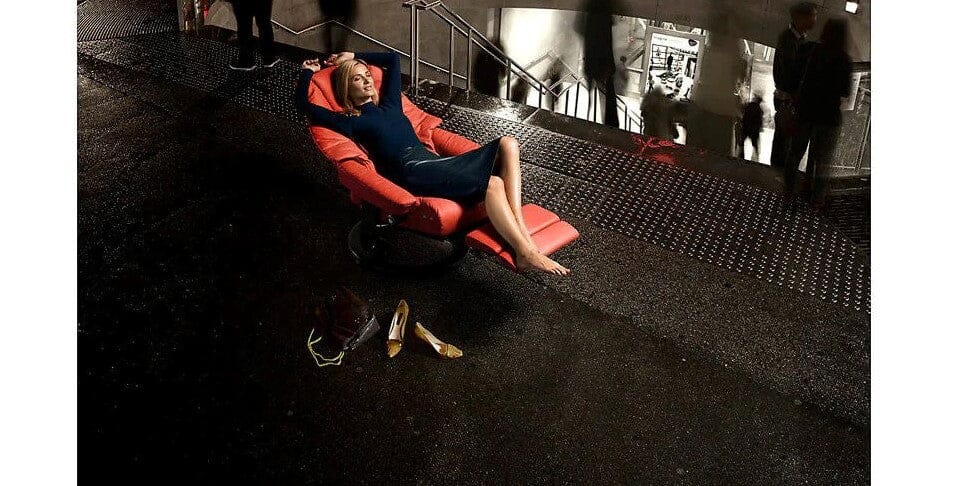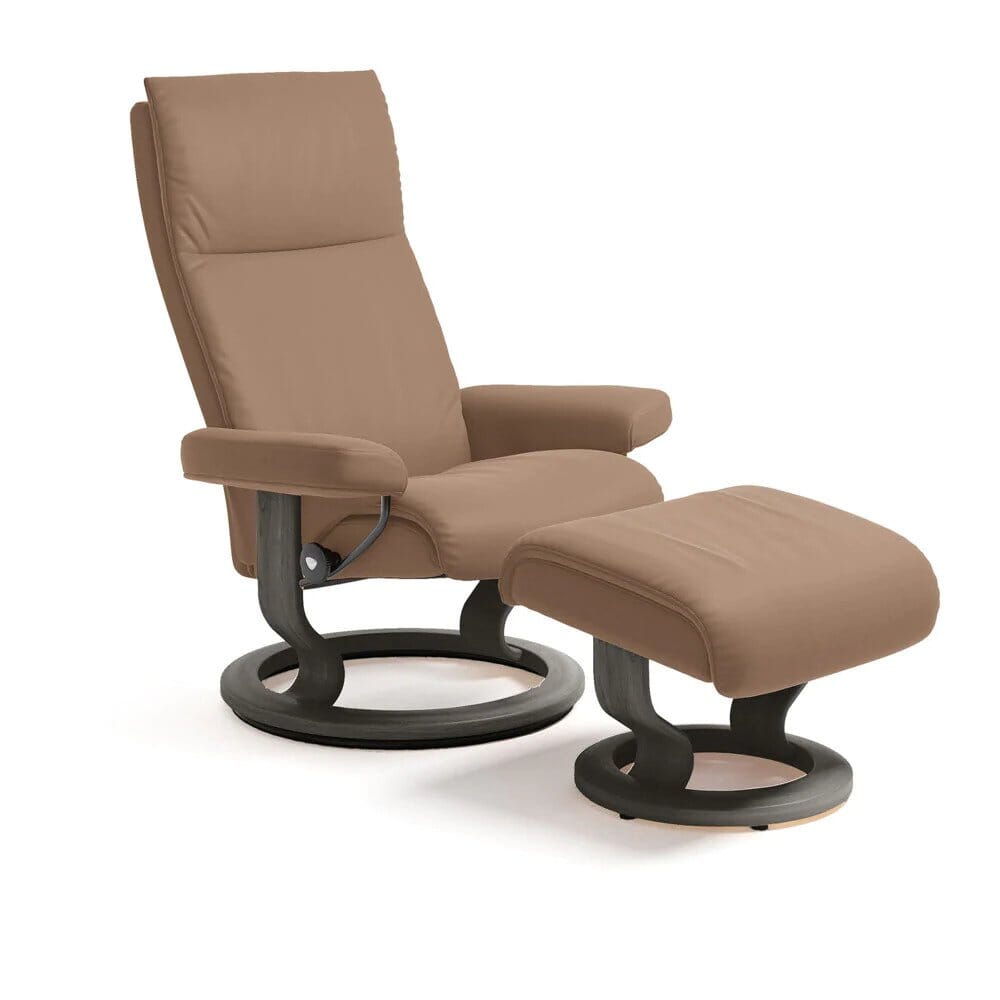800.605.1859 - FREE SHIPPING ON MOST ITEMS OVER $99.00
Accessories
lighting
Designers
- ACHILLE CASTIGLIONI
- ALBERTO MEDA
- ALESSANDRO MENDINI
- ALEXANDER GIRARD
- ALFREDO HABERLI
- ALVAR AALTO
- ANNA CASTELLI FERRIERI
- ANTONIO CITTERIO
- ARNE JACOBSEN
- BARBER & OSGERBY
- CARLO ALESSI
- CARLO MOLLINO
- CHARLES & RAY EAMES
- CHARLOTTE PERRIAND
- EERO SAARINEN
- EILEEN GRAY
- ENZO MARI
- ERNESTO GISMONDI
- ETTORE SOTTSASS
- ACHILLE CASTIGLIONI
- ALBERTO MEDA
- ALESSANDRO MENDINI
- ALEXANDER GIRARD
- ALFREDO HABERLI
- ALVAR AALTO
- ANNA CASTELLI FERRIERI
- ANTONIO CITTERIO
- ARNE JACOBSEN
- BARBER & OSGERBY
- CARLO ALESSI
- CARLO MOLLINO
- CHARLES & RAY EAMES
- CHARLOTTE PERRIAND
- EERO SAARINEN
- EILEEN GRAY
- ENZO MARI
- ERNESTO GISMONDI
- ETTORE SOTTSASS
sale
In-Stock Items

Are you sitting comfortably? Ergonomics and modern design.
December 02, 2020
Poor design is easy to spot. Poor design is the chair that makes our back ache, that purse zipper that looks great but doesn’t close properly, that lightswitch in the wrong place. Poor design is that new glass roof on the office atrium that looks amazing, but in summer cooks the reception staff until they’re medium rare. It’s that airplane seat that’s apparently designed for contortionists and jellyfish, or it’s that food label that’s so small it’s unreadable.
Poor design is the triumph of looks over function, or the result of a disconnect between a thing and how people actually use it.
Good design is less easy to notice because good design is comfortable. Good design helps us do the thing. Everything is magically in the right place, or at the right height or within the right reach. Good design fits us as individual people and puts the humanity back into systems.
It’s all about ergonomics
Good design and ergonomics are inextricably linked. Ergonomics is an applied science that uses design to help people interact with the things they use effectively, efficiently and safely. You’ll often hear words like biotechnology, human factors and human engineering alongside ergonomics, but they’re all aiming for the same thing.
Ergonomics has always been a factor in modern design. Many of the pioneer designers - like Bill Stumpf, Don Chadwick and Niels Diffriens - had a background in industrial design, where the science of ergonomics was born, and transferred its principles to their design for the home. For today’s designers, ergonomic principles are as central to the philosophy of modern design as they ever were.
Bill Stumpf
Back in the 1970s, designer Bill Stumpf spent time working with specialists in orthopedic and vascular medicine at the University of Wisconsin-Madison to understand more about how people sit, and transferred his knowledge to his work at Herman Miller to produce the Ergon chair. The Ergon’s innovative cushion shapes and adjustability gave the user more comfort than the standard office chair of the times.

Ergon Chair
The Ergon evolved into the Equa chair of the 1980s. Retaining the elbow support of the Ergon, the Equa featured five legs for improved mobility and a one-piece polyester resin shell for more support.
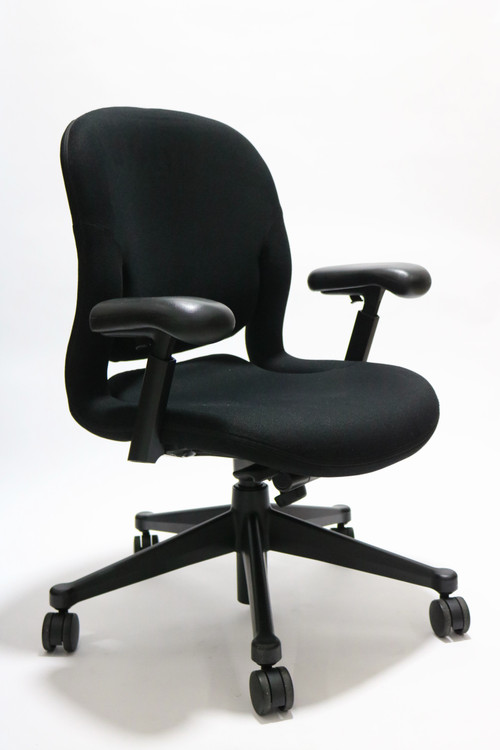
Equa chair
Stumpf and Don Chadwick
In the 1990s, Don Chadwick joined with Stumpf to design the iconic Aeron Chair, which focused on mirroring the human form. Informed by the needs of people who spend a long time sitting, such as elderly people in retirement homes, the Aeron swapped cushioning for body-supportive and cooling mesh, and also improved adjustability and pressure distribution.
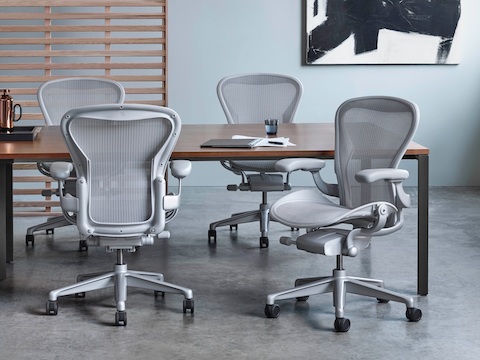
Niels Diffrient
Legendary Niels Diffrient was an American industrial designer who put the human into human engineering. He believed that design should fit the human, and not the other way round, and his influence is such that, in 2007, Forbes named him “the "granddaddy of the ergonomic revolution". From the 1950s, Diffrient’s designs made industry more human-friendly and his portfolio included designs for Honeywell, John Deere, AT & T, Knoll and American Airlines.
His partnership with Humanscale, designer and manufacturer of products that aim to improve working life, led to the evolution of two innovative task chairs.
Diffrient’s Freedom Task Chair is built for comfort and promotes movement. The Freedom is the original self-adjusting chair, dispensing with the need for adjusting levers and dials, and also eradicating the risk to the user of incorrect adjustment. The pivoting backrest and recline allows the user to shift from posture to posture with continuous, constant support, and its contours mimic the human shape and reduce pressure points. Every part responds to human movement, from the articulating headrest, synchronous armrest and self-adjusting recline.
And, of course, it looks damn good.

“Why would you design something if it didn't improve the human condition?” Niels Diffrient, New York Times.
Diffrient’s weight-sensitive Liberty Task Chair has the same objectives as the Freedom but achieves it slightly differently. Using Humanscale’s unique form-sensing mesh technology, the Liberty offers users the same self-adjusting comfort couched within a more minimalist aesthetic.

The future of ergonomics
The principles of ergonomics are the foundation for the “health positive” principle that’s evolving within contemporary design. For instance, as we discover more about the damaging effects of a sedentary lifestyle, designers are using ergonomic principles to address real health concerns. A case in point is Humanscales’ QuickStand Eco, which converts a standard desk into a more healthy sit/stand model. And this is just the start. As, post-Covid, we learn to live a different way, ergonomic design principles will continue to make life better for all of us.
Also in News
Subscribe
Sign up to get the latest on sales, new releases and more …

